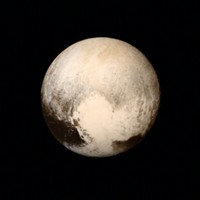Advertisement
Grab your lab coat. Let's get started
Welcome!
Welcome!
Create an account below to get 6 C&EN articles per month, receive newsletters and more - all free.
It seems this is your first time logging in online. Please enter the following information to continue.
As an ACS member you automatically get access to this site. All we need is few more details to create your reading experience.
Not you? Sign in with a different account.
Not you? Sign in with a different account.
ERROR 1
ERROR 1
ERROR 2
ERROR 2
ERROR 2
ERROR 2
ERROR 2
Password and Confirm password must match.
If you have an ACS member number, please enter it here so we can link this account to your membership. (optional)
ERROR 2
ACS values your privacy. By submitting your information, you are gaining access to C&EN and subscribing to our weekly newsletter. We use the information you provide to make your reading experience better, and we will never sell your data to third party members.
Astrochemistry
50 years since humankind’s giant leap
by Bibiana Campos Seijo
July 21, 2019
| A version of this story appeared in
Volume 97, Issue 29
On July 20, we celebrated 50 years since Neil Armstrong uttered the famous phrase “That’s one small step for a man, one giant leap for mankind” as he stepped out of Apollo 11 and onto the surface of the moon.
Armstrong was the first human to set foot on our satellite, but he wasn’t the last—Buzz Aldrin, for example, stepped out just 19 min after him. NASA hopes they will become two of many when the Artemis program successfully delivers a new cargo of humans—the first woman and the next man—to the lunar south pole. That is the challenge set forth by the current administration, which aims to make the Artemis program reality by as soon as 2024. In the meantime, NASA also has plans to build a small space station that would orbit the moon by 2023.
If, like many, you are fascinated by the moon landing and would like to reminisce about the events of half a century ago, you are in for a real treat. While researching Apollo 11, I came across a website called Apollo 11 in Real Time, which is a tremendous treasure trove of historical mission material, including around 2,000 photographs, mission-control film footage, onboard footage, TV transmissions and commentary, and more. Apollo 11 in Real Time streams the whole mission as it progressed and provides access to all the action that surrounded our first trip to the moon.
Interestingly, we could be bracing ourselves for another milestone in space exploration by this time next year. Come July 2020, expect to hear about three planned missions to travel to and land on Mars as it reaches its closest point to Earth, which happens every 26 months. If all three missions are successful, it’ll be the first time that three rovers from different nations will explore Mars simultaneously.
You can read more about the missions, what they hope to accomplish, and what kind of chemistry they plan to do on the surface of Mars on page 32. I hope you take the time to inspect the photos and renderings of the rovers and landers that have previously reached Mars’s surface successfully. There is no doubt that these machines are feats of engineering, and it’s interesting to see how their designs have changed and evolved through the years and the different missions.
But going back to the Apollo 11 mission: Do you remember where you were and what you were doing during the moon landing? We polled the team here at C&EN, and a large proportion of us had not yet been born. Of those who were born before 1969, one confessed to falling asleep, as kids do, while waiting to watch the landing on TV. Another confirmed he was TV-less at a National Scout Jamboree in Idaho. That jamboree was mentioned by none other than Neil Armstrong while on orbit around the moon. He said, “I’d like to say hello to all my fellow Scouts and Scouters at Farragut State Park in Idaho having a National Jamboree there this week; and Apollo 11 would like to send them best wishes.” And, of course, you can watch and verify this on Apollo 11 in Real Time. Just look out for the transmission from July 18, 1969, at 056:42:31 in mission elapsed time.Fascinating, isn’t it? The best answer to our question came from one of our production editors, who, as she was born well after 1969, decided to text her father. “Hey dad where were you during the moon landing?” she asked. “On earth,” he answered. Classic.
Views expressed on this page are those of the author and not necessarily those of ACS.





Join the conversation
Contact the reporter
Submit a Letter to the Editor for publication
Engage with us on Twitter